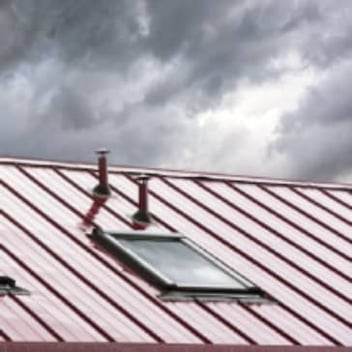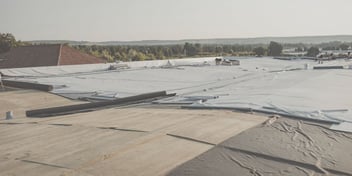- Home »
- Learningcenter »
- What elastomeric roof coatings
What Are Elastomeric Roof Coatings and How Do They Work?
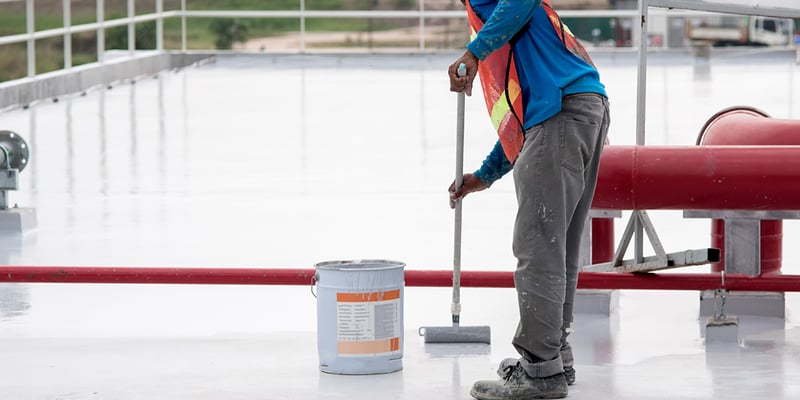
Are you interested in saving money on your energy bills and stopping leaks in your commercial roofing system? If so, you'll want to learn more about elastomeric roof coatings and how they work.
The short story is that elastomeric roof coatings are highly durable and protect your roof from leaks and other damage. Because these coatings can stretch and move with your roof, they can expand and contract with your roof system as the temperature changes.
Beyond that, the highly reflective nature of elastomeric roofs means that they help to improve the overall energy efficiency of your building; this is a huge plus in a place like Atlanta, where the sweltering summer heat can send cooling bills soaring and HVAC systems into overdrive.
If you've been considering replacing your commercial roof due to its age, consider saving money and restoring it using an elastomeric roof coating. Let's dive in and look at everything you need to know.
What Are Elastomeric Roof Coatings?
An elastomeric roof coating is a paint-like liquid used in commercial roofing systems. This substance forms a membrane on top of an existing roof to provide many benefits, including:
- ● Creating a monolithic layer
- ● Making the roof waterproof
- ● Extending the lifespan of the roof
- ● Extending the warranty on the roof
- ● Adding reflectivity, which helps to reduce cooling costs
This coating is typically white in color to reflect sunlight and keep the temperature comfortable in hot climates. However, in cooler climates, property owners will sometimes apply a gray coating to absorb heat during the year's colder months.
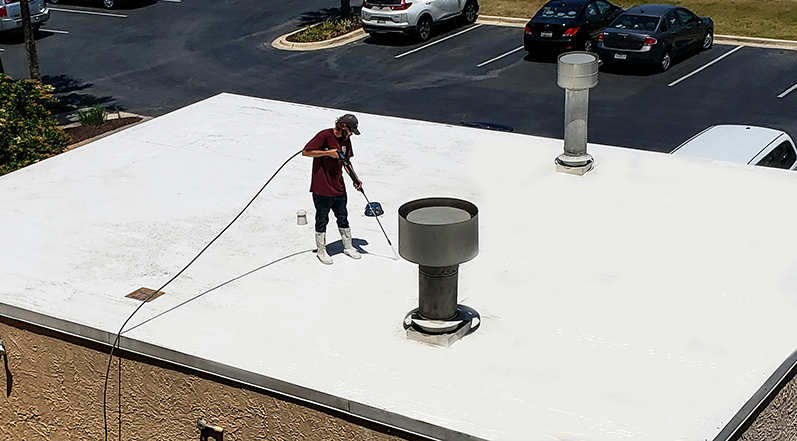
Elastomeric coatings have many appealing properties, including chemical resistance, abrasion resistance, impact resistance, tensile strength, tear strength, hardness, and elongation. Combining the two can create a particularly robust roof system if there are properties associated with the coating that the membrane itself doesn't have.
These roof coatings are made from polymers that allow for a waterproof and weatherproof seal on a roofing system.
Suppose you have an aging roof that is still in generally good condition. In that case, you might be happy to learn that applying an elastomeric roof coating could allow you to avoid a full roof replacement while still providing superior protection for your building.
One of the major benefits of going this route is that you don't have to deal with the time and expense associated with ripping off your old roof. You don't have to close down shop until your roof replacement is finished– business can continue as usual when your coating is applied.
The Four Main Types of Elastomeric Roof Coatings
There are a wide variety of formulas and types of elastomeric coatings, each of which is suited to different kinds of surfaces and environments. The most common types of elastomeric roof coatings are silicone, polyurethane, acrylic, and butyl.
1. Silicone
Silicone coatings are a great choice if you have a flat roof because they are able to withstand pooling water without breaking down.
![]()
This resin-based coating is 96% solids and 4% carrier, meaning that almost all of the material you put down on the roof will stay there– as opposed to acrylic, where half of the product evaporates as a part of the application process; this can be a good choice for roofs that have been treated with polyurethane foam recently. Displaying excellent weathering, silicone roof coatings can provide excellent protection.
2. Polyurethane
Polyurethane might be the way to go if you have a roof that you expect to get a lot of foot traffic. Sometimes referred to as urethane, polyurethane coatings are one of the most durable roof coatings. Beyond that, urethane roof coatings are durable when faced with ponding water.
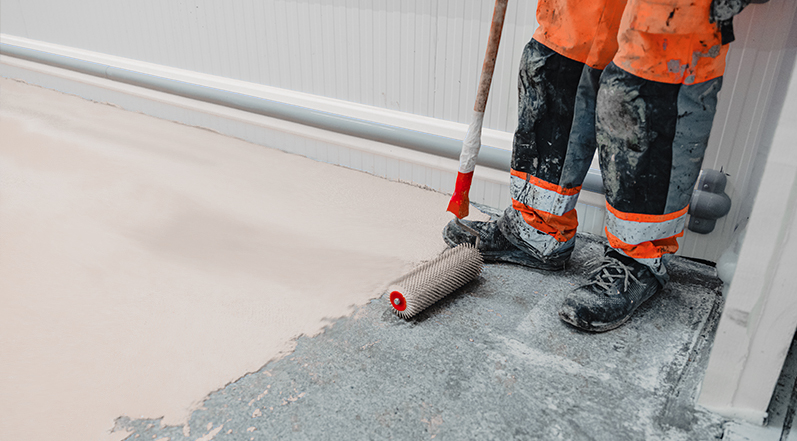
Another benefit of this coating is that it can withstand the contraction and expansion of the roofing system that occurs with temperature fluctuation. Polyurethane coatings are ideal for roofs made with a single-ply application of TPO or PVC and roofs made from modified bitumen.
Though this is a good choice in a number of circumstances, you likely won't want to apply a polyurethane roof coating if you are tackling this as a DIY project; this is a xylene-based coating, which can be difficult to spray and rough on equipment.
3. Acrylic
Acrylic coatings are water-based and only used for sloped roofs. The reason for this is that acrylic coating can't withstand pooling water, as this will cause the layer to transform back into its fluid form. If this were to occur, the coating would wash off your roof.
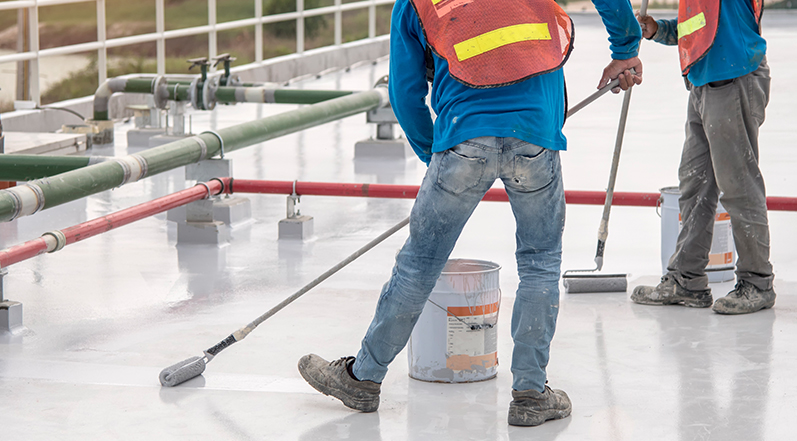
These acrylic coatings are usually about 48% water and 52% solids by volume; evaporation will lead to nearly half of the product being lost during the application process. Acrylic is a more affordable form of elastomeric coating than the other options, but more material is required to compensate for the evaporative loss.
One of the benefits of this option is that it is considered one of the most environmentally friendly options. It is also known for being easy to clean and having superior longevity. Acrylic is also known for providing good insulative value, which is very valuable to property owners that are motivated to keep their energy bills low.
For these reasons and the reduced cost of the product, this is the most widely used type of elastomeric roof coating.
4. Butyl
Lastly, butyl is another common material used for elastomeric coatings. Butyl is created with isobutylene, which is a hydrocarbon (an organic compound made up entirely of hydrogen and carbon.)
Isobutylene is refined to produce butyl rubber, which is then transformed into a liquid form to be used as a coating.
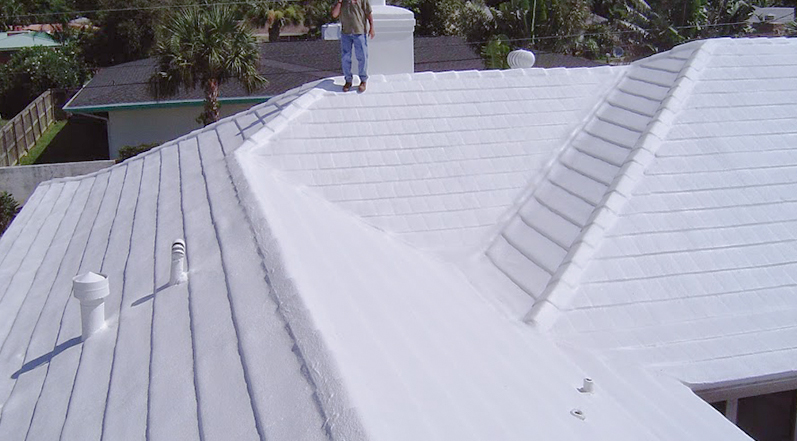
This elastomeric coating has excellent flexibility and is also impermeable to air, providing an excellent vapor barrier. It works particularly well on roofs that are made from asphalt built-up, modified bitumen, and single-ply roofing. Additionally, it can handle pooling water on roofs with low slopes or flat roofs.
One of the downsides to butyl rubber coatings is that their production and disposal process isn't considered particularly environmentally friendly. For this reason, some roofing contractors choose to utilize other coating types.
How Do Elastomeric Roof Coatings Work?
Made from polymers that are formed from molecules that are exceptionally large and that exist in an amorphous rather than crystalline state, elastomeric roof coatings can effectively prevent existing roof damage from worsening and seal roof leaks. The coatings' components can form a strong bond, meaning that they create a strong membrane across the roof when appropriately applied.

When incorrectly applied around protrusions such as vent pipes, drains, electrical and refrigerant raceways, and equipment anchors, it seamlessly joins with the surface for superior water resistance and durability.
How Long Do Elastomeric Roof Coatings Last?
Several variables impact how long an elastomeric roof coating will last, but they are known to last between ten and twenty years. These estimates result from extensive testing done by major elastomeric coating manufacturers that have performed extensive weather testing on their products.
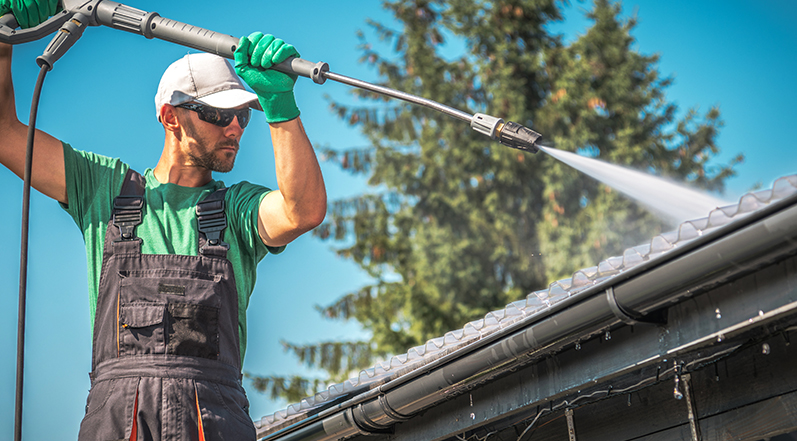
One factor that impacts the longevity of a roof coating is the thickness of the coating applied to the roof.
Usually, you have to apply 20 mils of coating material in order to receive a ten-year warranty from the manufacturer, or 30 mils for a 20-year warranty.
How Do You Maintain a Roof With an Elastomeric Coating?
One of the essential parts of the maintenance of any roofing system is regular inspections; this can ensure that any problems are spotted quickly before they become larger or more expensive. There are many things that can cause damage to a roof with an elastomeric coating, including rain, wind, foot traffic, or falling debris.
You'll also want to ensure that areas where water frequently travels as part of the drainage system are regularly inspected.
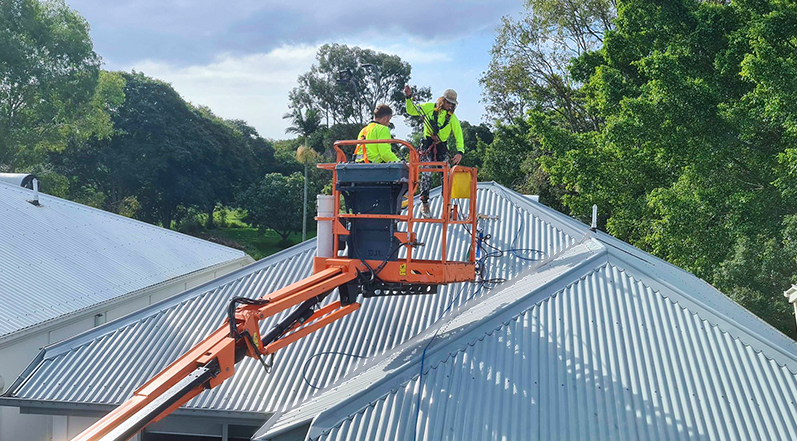
One of the good things about elastomeric roof coatings is that they don't crack easily; this is thanks to the elastic properties of the material. Some boast unique properties, such as better insulation, more stretch, good adherence if painted over, and resistance to weather change cracking.
Depending on the product type, the environment, and other factors, elastomeric coatings need to be reapplied every 15-20 years in order to repair any damaged seals.
Six Factors to Consider When Choosing a Commercial Roof Coating
There are a number of different physical properties that you'll want to consider when determining which type of coating is right for your roof.
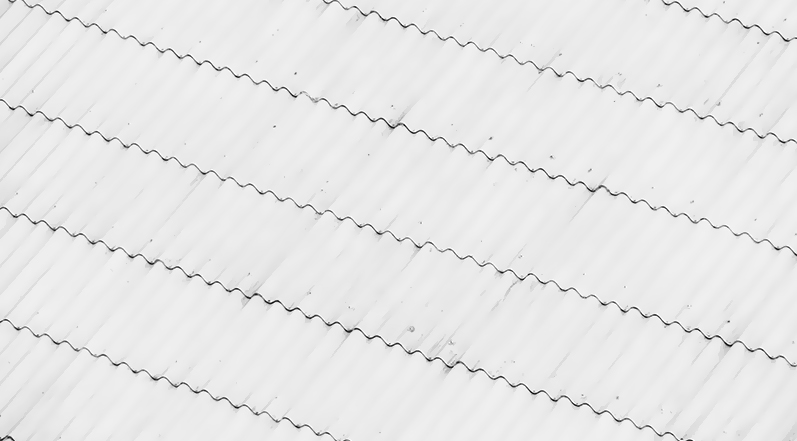
1. Elongation
Elongation is a primary measure of the flexibility and durability of a roof coating material. Elastomeric roof coatings are designed to be flexible, so they can move with the roof and remain firmly attached even when the roof expands and contracts in response to changes in temperature.
A roof coating material’s elongation indicates how well it can resist stretching under tension. Elongation is measured as a percentage and ranges from 150% to over 1000%.
A high elongation rate indicates that the coating can handle movement without cracking or tearing, making it ideal for use on roofs that experience seasonal expansion and contraction due to changing temperatures. Elastomeric roof coatings with a high elongation percentage can provide superior protection for a roof for many years.
2. Permeability
Also known as the perm rating, permeability refers to whether liquids and gasses can pass through the material. Silicones, for example, have very low perm ratings, which means they are highly effective at blocking moisture transmission. On the other hand, acrylics have a high perm rating and are breathable but not as effective at resisting moisture transmission.
Moisture buildup can cause structural damage without permeable roof coatings, leading to costly repairs. In addition to providing water resistance, elastomeric coatings can also increase the overall life expectancy of your roof.
By protecting against moisture damage, these coatings can help extend the life of your roof and save you money on repairs over time.
Ultimately, elastomeric coatings provide excellent protection against moisture damage and can be a great way to extend the lifespan of your roof. Choosing a product with good permeability ensures that your roof remains waterproof and protected for years to come.
3. Tensile Strength
This factor has to do with the amount of pressure the material can deal with before breaking. 250-1200 psi is a common range for elastomeric coatings.
This property also helps to keep water from seeping into the underlying structures and damaging the roof. Additionally, elastomeric coatings are designed to protect against UV damage and prevent corrosion caused by acid rain.
Check the tensile strength rating when choosing an elastomeric coating for your commercial roof. This rating will help you determine whether the coating is strong enough to protect against harsh weather conditions.
4. Reflectivity
Reflectivity refers to the ability of a particular material to reflect light, and it's represented by a percentage between 0% and 100%. Roof coating systems typically reflect 80-90% of the sun's energy away from the building.
By reflecting more of the sun’s rays, the temperature of your roof surface will remain cooler and require less energy to cool your building; this can reduce the cost of electricity used for cooling and also help lower your overall energy costs. Additionally, because elastomeric coatings are highly reflective, they can help reduce the urban heat island effect caused by absorbing solar radiation.
5. Solids By Volume
This measurement has to do with the amount of solid material that will be present on the roof after the roof coating has dried.
The higher the percentage of solids, the thicker and more durable the coating will be when applied. Products with higher levels of solids also tend to last longer, saving you money in the long run.
6. Emissivity
Finally, the emissivity of a material has to do with its ability to release absorbed heat. Usually represented as a number between 0 and 1, the ideal emissivity amount for an elastomeric coating is typically considered to be 0.65; this means that 65% of the sun's thermal energy is emitted away from the structure, helping to lower cooling costs and reduce the heat loads of the building.
How Much Does It Cost to Coat a Roof With an Elastomeric Coating?
The cost of coating your roof with an elastomeric coating depends on your chosen sealant type.
Acrylic is the cheapest option, but it does require more material because of the evaporative loss that occurs during application. Generally, the materials cost is between $0.15 and $0.80 per square foot, while the total installation cost per square foot is $0.50-$3.00.
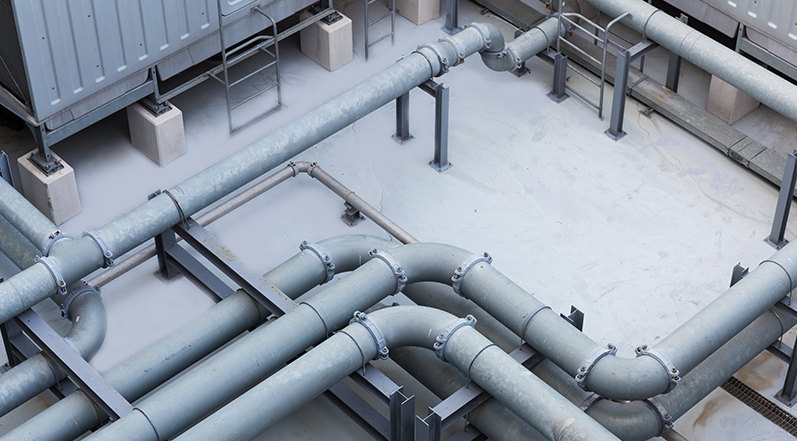
Polyurethane runs roughly $0.45-$1.30 per square foot for the materials and between $1.50 and $4.00 per square foot for the total installation cost.
The materials cost of silicone roof coatings is about $0.50 to $1.40, while the total installation cost is generally between $1.50 and $4.50 per square foot. Liquid rubber or butyl usually costs between $0.80 and $1.20 per square foot for the materials and $1.50 and $2.50 per square foot for the total cost installed.
Are You Looking to Have an Elastomeric Roof Coating Installed in the Atlanta Area?
As you can see, elastomeric roof coatings are a cost-effective way to protect your roof, reduce your energy bills, and avoid a full-on roof replacement when your roof is aging. If you're looking for the best roofing company in the Atlanta area to revamp your commercial roof with an elastomeric coating, you've come to the right place.
At Colony Roofers, we hand-select our employees for their work ethic, integrity, and experience. We pride ourselves on offering a truly outstanding customer experience while ensuring affordable roofing solutions. Our customer service is the best of the best, and you can't beat our prices. Please contact us today if you are ready to schedule an estimate or have questions about the roof coating process or any other roofing needs.
 Call (678) 365-3138
Call (678) 365-3138

